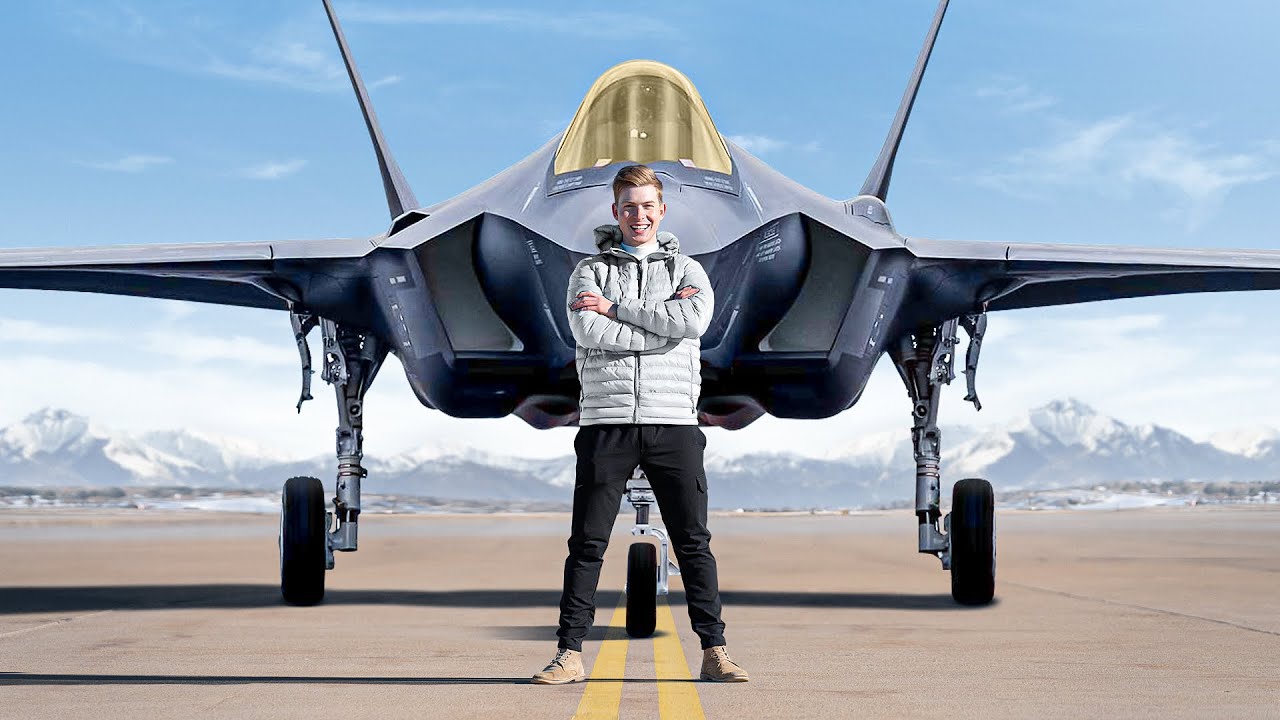Fighter Pilot Breaks Down Every Button in an F-15 Cockpit | Ars Technica
Summary
TLDRIn this insightful presentation, Andrea Themely, a former Air Force pilot, introduces the F-15C fighter jet, showcasing its advanced features and operational capabilities. With a record of 104 victories in aerial combat, the F-15C is highlighted for its ergonomic cockpit design, emergency controls, and sophisticated weapons systems. Themely explains key components like the heads-up display, navigation systems, and the emergency jettison functions. She concludes by detailing the jet's engine start-up procedure, emphasizing the pilot's extensive training and the importance of situational awareness, all while expressing gratitude to the Fresno Air National Guard for their support.
Takeaways
- 😀 The F-15C is a highly advanced fighter jet known for its unmatched aerial combat record: 104 victories and zero losses.
- ✈️ The cockpit features over 250 buttons, designed for easy access to essential controls like the HUD and various indicators.
- 🔧 Emergency controls include an ejection seat, emergency jettison switches for fuel and weapons, and a canopy blow-off switch.
- 💥 The F-15 uses HOTAS (Hands On Throttle and Stick) for weapons and radar control, allowing pilots to operate systems without looking down.
- 🎯 The aircraft is equipped with countermeasures like flares and chaff to defend against heat-seeking missiles and radar threats.
- ⚙️ Navigation relies on advanced systems like GPS and inertial navigation, ensuring accurate positioning even in combat.
- ⏱️ The pilot's helmet-mounted cueing system provides critical flight information directly in their line of sight.
- 💨 The G-suit worn by pilots helps manage high G forces, preventing blackouts during intense maneuvers.
- 📊 Standby instruments provide essential data in case of avionics failure, ensuring the pilot can still navigate and land safely.
- 🛫 Starting the jet involves a sequence where the engine master switches activate fuel pumps and the jet fuel starter, initiating engine operation.
Q & A
What is the primary function of the F-15C fighter jet?
-The F-15C is designed as an all-weather air superiority platform, capable of engaging and defeating enemy aircraft.
What impressive combat record does the F-15C hold?
-The F-15C boasts a combat record of 104 victories with zero losses in aerial combat.
How many hours of flight experience does Andrea Themely have in high-performance aircraft?
-Andrea Themely has over 3,400 hours in high-performance aircraft, including 1,100 hours specifically in F-15s.
What does HOTAS stand for and its significance in the F-15C?
-HOTAS stands for 'Hands On Throttle and Stick' and allows pilots to control radar and weapons systems without taking their hands off the throttle and control stick, enhancing situational awareness.
What is the purpose of the ejection seat in the F-15C?
-The ejection seat is designed for emergency situations, allowing the pilot to safely exit the aircraft in case of critical failure or danger.
What are flares and chaff, and how do they function as countermeasures?
-Flares create a large IR heat signature to divert heat-seeking missiles, while chaff consists of aluminum bundles that create a radar signature to obscure the aircraft from radar detection.
What is the role of the multi-purpose color display (MPCD) in the F-15C?
-The MPCD provides the pilot with a moving map and situational awareness by displaying the aircraft's position relative to other aircraft, targets, and airfields.
How does the pilot start the engines of the F-15C?
-To start the engines, the pilot activates the engine master switches to power the fuel pumps and engage the jet fuel starter (JFS), which spins the turbine until it reaches operational RPM.
What features are included in the F-15C's navigation and communication systems?
-The F-15C is equipped with multiple radios, a transponder, GPS, and an inertial navigation system, allowing for effective communication and navigation in various operational contexts.
What is the significance of the G-suit worn by pilots?
-The G-suit helps counteract G-forces experienced during flight, preventing pilots from losing consciousness by maintaining blood flow to the brain during high-G maneuvers.
Outlines

Cette section est réservée aux utilisateurs payants. Améliorez votre compte pour accéder à cette section.
Améliorer maintenantMindmap

Cette section est réservée aux utilisateurs payants. Améliorez votre compte pour accéder à cette section.
Améliorer maintenantKeywords

Cette section est réservée aux utilisateurs payants. Améliorez votre compte pour accéder à cette section.
Améliorer maintenantHighlights

Cette section est réservée aux utilisateurs payants. Améliorez votre compte pour accéder à cette section.
Améliorer maintenantTranscripts

Cette section est réservée aux utilisateurs payants. Améliorez votre compte pour accéder à cette section.
Améliorer maintenantVoir Plus de Vidéos Connexes

Why you can't shoot the F-35 down (even if you lock onto it)

The World’s Most Advanced Fighter Jet | F-35 Lightning

Rapid Progress on J-31 Stealth Fighter, Pakistan Set to Receive Its First Batch Soon| InShort

F35 Fighter Jet EXPOSED Can India Really Afford It? | Indian Defence Update

Who Wins!! F-14 Tomcat Vs F-15 Eagle: The Best Jet Fighters in the World | Military Summary

PAK-IND War | Rafale jets destroyed, Indian Air Force in Trouble | Pakistan Ready to Attack on India
5.0 / 5 (0 votes)
